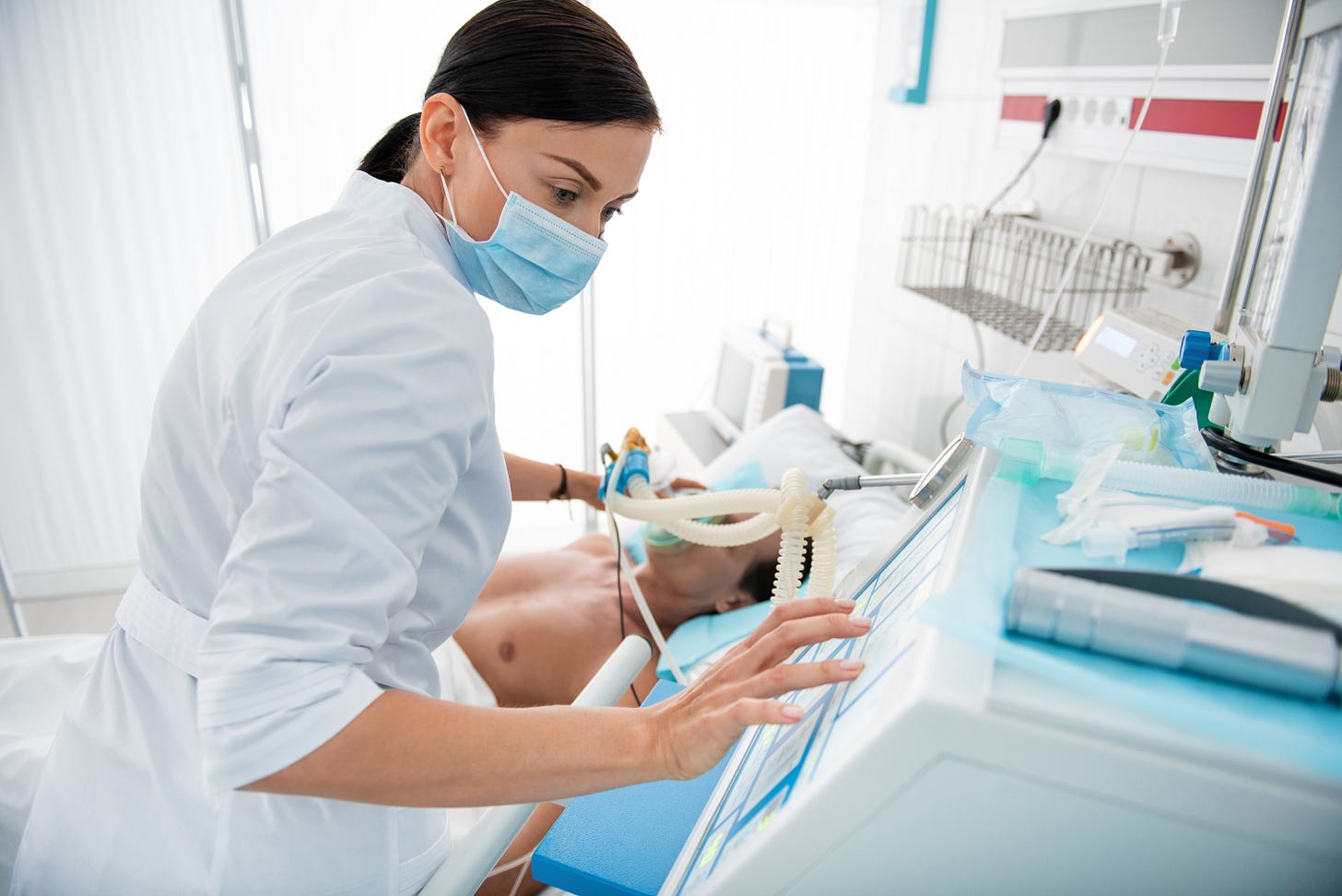Meta-analysis: Leg ergometry helps vented patients in ICUs worldwide
But wait a minute.
Critically ill patients receiving mechanical ventilation are highly prone to developing severe weakness and long-term disability. Although early mobilization and physical therapy for vented patients would intuitively seem to have indisputable benefits, early mobility programs have failed to consistently show improvements in meaningful patient-centered outcomes (e.g, increased functional independence or exercise ability after ICU discharge).
In the absence of proven benefits, the critical care community has not rushed to adopt the scattered practice of walking mechanically ventilated patients around ICUs.
Leg ergometry (i.e., in-bed cycling) presents an attractive potential modality for vented patients to safely exercise. However, in the largest randomized trial performed to date, leg ergometry failed to improve physical strength 3 days after ICU discharge. (It’s important to note ergometry was compared to regular physical therapy in the control group, which most ICU patients don’t get.)
Does in-bed cycling make vented patients stronger?
Intensive early mobility in the ICU is still waiting for its breakthrough moment. Guidelines recommend physical therapy and rehabilitation as soon and as often as feasible in critically ill patients, but that’s based more on biological plausibility than evidence.
But is that the whole story?
More than 33 randomized trials have tested leg ergometry in over 3,200 mechanically ventilated patients on four continents.
Combining them into a meta-analysis, O’Grady et al (including authors from the aforementioned Canadian cycling trial) came to a very different conclusion than their own RCT. In the new analysis, leg ergometry has powerful healing benefits (all statistically significant):
Improved physical function at ICU discharge
Improved physical function at hospital discharge
Reduced ICU length of stay (by ~1 day)
Reduced hospital length of stay (by ~1.5 days)
They described “low to very low certainty of evidence” for all but hospital LOS, which was “moderate.”
But is that the whole story? Of course not.
Keep reading with a 7-day free trial
Subscribe to PulmCCM to keep reading this post and get 7 days of free access to the full post archives.





